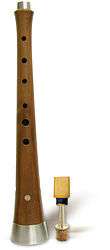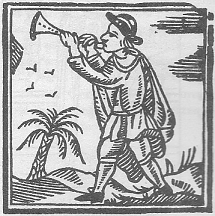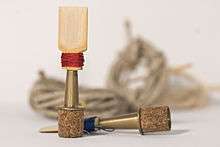Gralla (instrument)
 A gralla with a detached reed | |
| Woodwind instrument | |
|---|---|
| Other names | Grall de pastor, xaramita, xirimita |
| Classification | |
| Hornbostel–Sachs classification |
422.12 (Double-reeded aerophone with conical tube.) |
| Related instruments | |
The gralla (Catalan pronunciation: [ˈɡɾaʎə]), also known as grall de pastor, xaramita o xirimita, is a traditional Catalan double reed instrument in the shawm family. Like the dolçaina from Valencia – a very similar instrument that many experts consider a variety of the gralla – the gralla comes from the ancient xeremia a medieval instrument largely used until the Baroque. Probably, the name of the instrument comes from its strident sound similar to the sound of a Jackdaw native to Catalonia and northern Spain and also called 'Gralla' in Catalan.
The gralla is also very popular because it is the traditional instrument used during the construction and dismantling of human towers or castells and other traditional festivities. Usually it is played with the timbal, a percussion instrument similar to a drum. The traditional gralla melody used in castells, called the toc de castells, serves to advise the castellers within the tower what stage of the construction their colleagues have reached, as they are unable to see this.
The gralla player is called graller o grallaire

Types
- La gralla seca ("dry gralla"): the most simple type without any metallic keys and produces a more hard or strident sound. It is also the more typical type.
- La gralla dolça ("sweet gralla"): longer than the others, can have from one to many metallic keys that are used to produce lower and higher notes that the gralla seca can't produce and have also a less strident and more "sweeter" sound.
Components

- Cap: in the top of the instrument is where the tudell is inserted with the canya.
- Tub: the part between the tudell and the canya or inxa.
- Tudell: a conic tube made of metal where the canya is inserted.
- Canya o inxa: Formed by two identical reeds made of wood but independent, tied together by a wire.
- Cos: the central part of the instrument. A conical wood tube with six gaps in the front side and one in the back.
- Campana: the final part that act like an amplifier of the sound and has two gaps in the sides. It is usually covered with metal.
External links
| Wikimedia Commons has media related to Gralles. |
- Grallers.cat El web de la gralla i el món graller
- Partitures per a gralla
- Més partitures per a gralla
- Encara més partitures per a gralla
%2C_Martin_Style_3-17_(1859)_-_C.F._Martin_Guitar_Factory_2012-08-06_-_011.jpg)